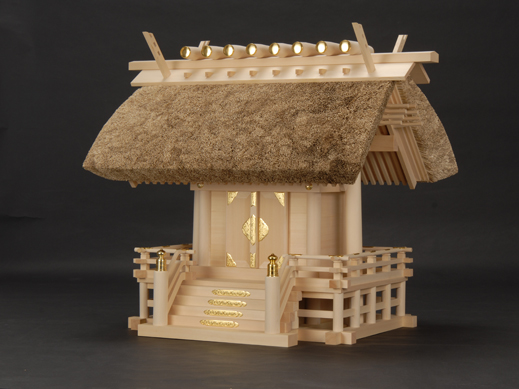Ise Miyachu
Ise Shinden (Shrine)

It is said that the Japanese, similar to other nations, had a culture of respecting and worshipping nature as gods, in the form of mountains, oceans, rivers and wind, as well as honoring and deifying ancestors and people who were known for their great achievements. 
This culture and its traditions were referred to as "Shinto" and one of its most representative architectural structures is the Shinto shrine, used as a place to worship the gods.
The work on display here is the "Kamidana" or household altar. The household altar or home shrine came about from people wanting to show the same deep respect when welcoming gods (as mentioned earlier) into the home as at a Shinto shrine. The Japanese people have a long tradition of erecting such altars in their homes.
Since our company's establishment to the present day, we have poured our heart and soul into carefully creating each work, adhering to time-honored techniques passed down by "Miyashi" (craftsmen who make household altars) in the holy region of Ise. True to the Japanese spirit of "Wa" (harmony), we pay meticulous attention to the materials used to create each household altar.
The thatched roof household altar is designed on the model of Ise Shrine, where the sun goddess Amaterasu Omikami, the supreme deity in the Shinto pantheon and the mythological ancestor of the Imperial Family, is enshrined. Ise Shrine is built using Japan's oldest architectural style, called "Yuiitsu shinmei-zukuri."
The roof has been thatched and the main structure uses wooden materials which are inextricably linked with Japanese culture. We have selected high quality Kiso hinoki (Japanese cypress) for this purpose.
I hope that the Japanese spirit of "Wa" (harmony) and culture is conveyed through this work.
